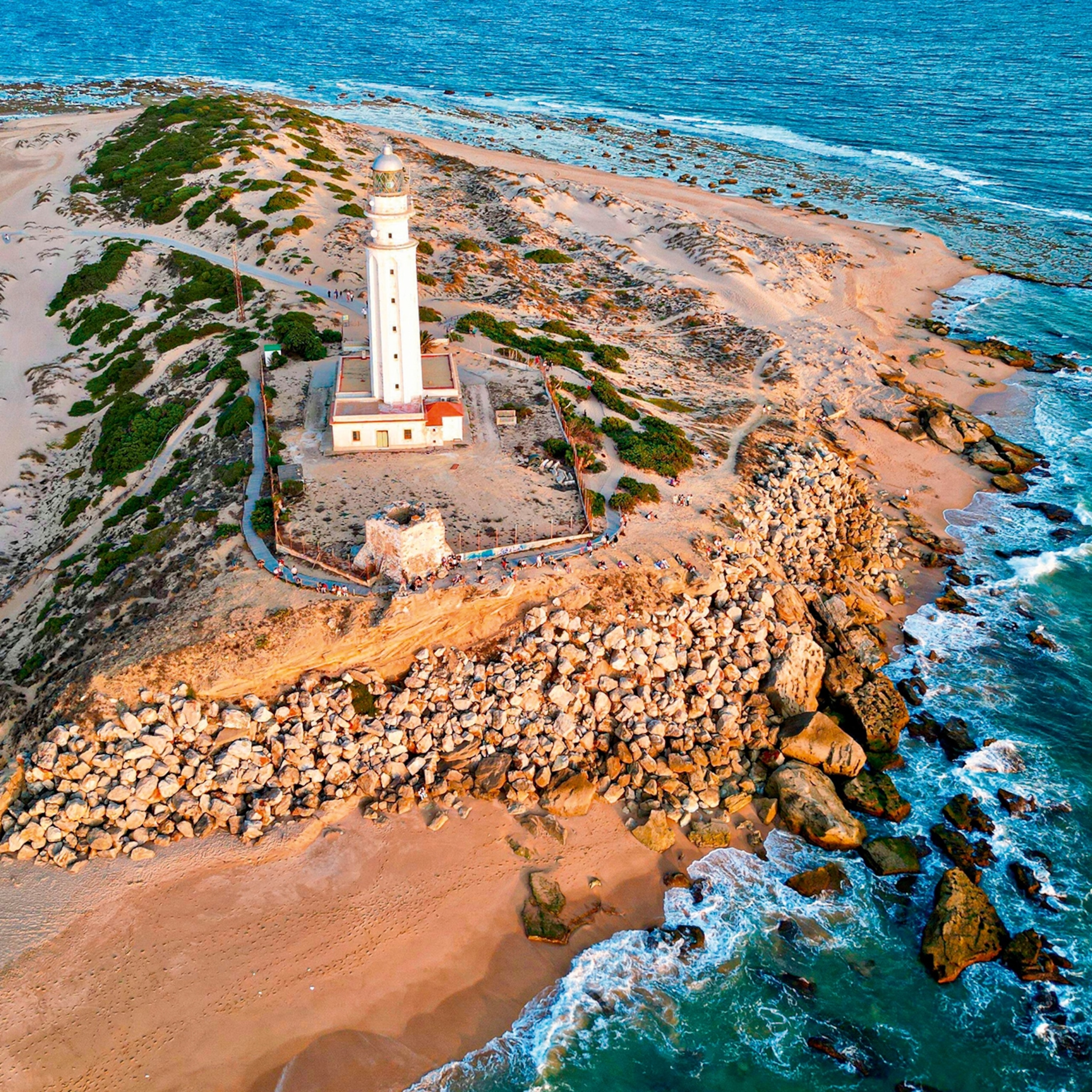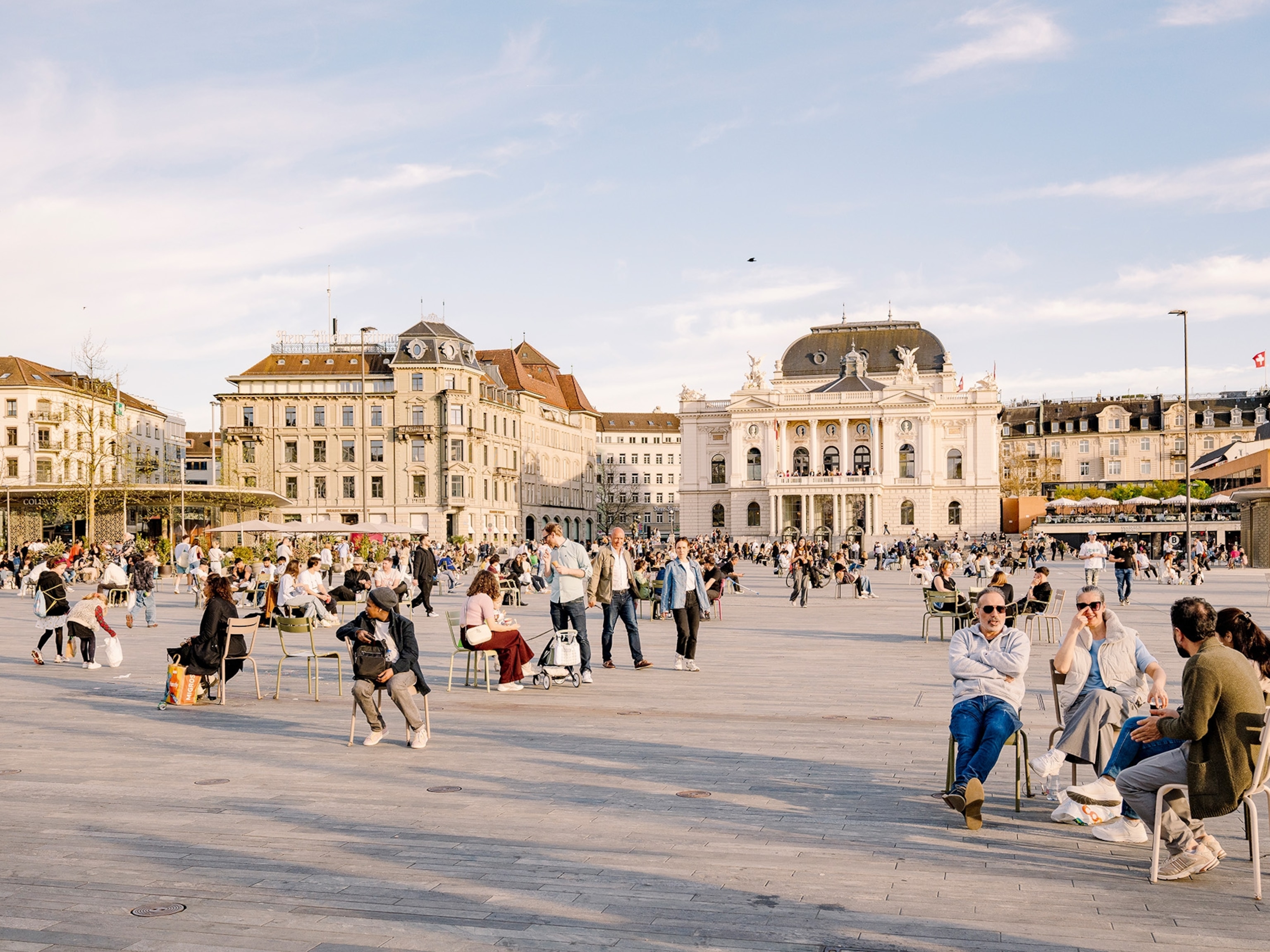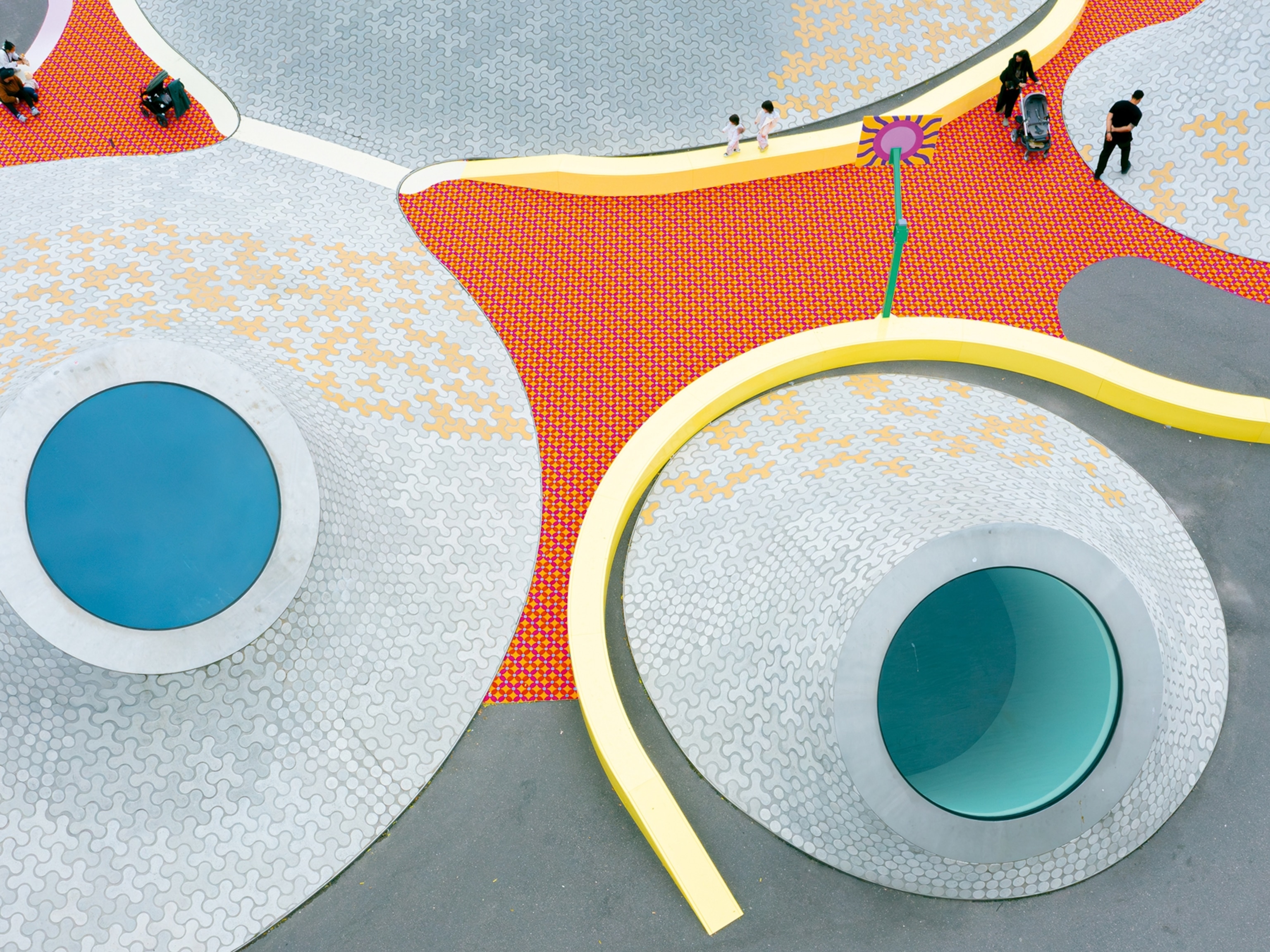
How to spend a weekend in Zaragoza in Spain's wild north east
Full of elaborate architecture and thrumming with vibrant tapas bars, the Aragonese capital is a rich, storied base for exploring the stirring landscapes of Spain's wild north east.
No Spanish place name holds as much mysterious promise as Zaragoza. It sounds like a magic word, the last phonetic flourish of a witch’s spell. Appropriate, given the city almost feels conjured from the wind-whipped moors around halfway between Madrid and Barcelona.
Standing on the River Ebro, this provincial capital has witnessed centuries of turbulence as the capital of the former kingdom of Aragón — a domain variously occupied over the millennia by Romans, Islamic caliphates, Catholic monarchs and the forces of General Franco.
All left their mark on the present architecture, but there are few buildings more evocative than the baroque spires around the mighty basilica of Nuestra Señora del Pilar, which marks the spot where the Virgin Mary supposedly appeared to St James in AD 40.
Step inside and you’ll fi nd its inner domes coloured by the art of Francisco de Goya, the artist born close enough to the city in 1746 to qualify as a local hero. The master painter’s ubiquitous work remains a totem of Zaragoza’s abiding creative spirit, and its people — nicknamed ‘maños’ — have inherited some of Spain’s richest traditions, from chocolate-making to lively folk dances.
But perhaps the greatest magic is in the Old Town: a painted labyrinth of taverns, courtyards and tapas bars that thrum at night like blood through veins.
Day one: tiles & tapas
Morning
Catholic pilgrims come to worship two related relics at Nuestra Señora del Pilar: a small wood icon of the Virgin Mary, and the ornate jasper column on which it rests. Believer or not, the gorgeously tiled and gilded cathedral-basilica makes a excellent starting point on a visit to the city.
Across the Plaza del Pilar is Zaragoza’s other cathedral, La Seo, a marvel of hybrid styles (Romanesque, gothic, neo-classical) incorporating the remains of an 11th-century mosque and ancient Roman forum. Reach deeper into the city’s past at the ruins of the 1st-century thermal baths and the amphitheatre of Caesaraugusta, the Roman settlement that gave Zaragoza its name.
Afternoon
For generations, the city’s surrounding farmlands have long sustained its citizens, with produce ranging from cereals to tronchon (sheep’s cheese). The signature dish, however, is ternasco, or roasted lamb, best eaten leisurely at El Real.
The restaurant has tables on a patio overlooking the Pilar and under the grand arches of the Pasaje del Ciclón arcade. The shops here mix the usual chains with more specialised local ateliers — if you’re shopping for something Aragónese, regional ceramics hubs like Muel have been turning out vivid, purple-and green clayware since the Middle Ages, while modern iterations of the same pottery are sold at the likes of Artesanía Aligia.
Evening
El Tubo (‘the tube’) is a dense lattice of backstreets that crams vintage taverns and modern bars between gothic courtyards, Renaissance-era houses and sections of the Roman city wall. Consider starting an evening with a glass of Cariñena wine at the Bodegas Almau or one of the 24 gins on offer at Libertad 6.8.
Tiny corner bar El Champi is renowned for its single tapa — garlicky mushrooms on bread — while Lamaribel Escabechado specialises in age-old pickling techniques to make rich, dense meat stews. Also in this zone is El Plata, hosting comedy, acrobatics and quasi-burlesque performances in a 1920s cabaret hall.

Day two: rivers & rhythms
Morning
Head for the Aljafería, the 11th century fortress built by the Muslim Banu Had dynasty, which later became the seat of the Kings of Aragón after the city was reconquered by Christians. Today, it stands restored as an imposing paragon of Hispano-Islamic art and architecture, decorated with impossibly intricate plasterwork, porticoes and original pictorial fragments.
It’s still in use today: the regional government holds parliamentary sessions in a modern annexe that seems prosaic alongside the structural poetry of the Golden Hall; the horseshoe shaped Muslim oratory; the Throne Room and the so-called Troubadour Tower, all of which are well worth a morning’s exploring.
Afternoon
The palace grounds lead you through to the right bank of the Ebro. Stick around for lunch outdoors at the riverside beach Playa Los Angeles Terraza, then spend the afternoon strolling the waterfront, which was renewed as part of the city’s Expo 2008 preparations.
Some 12 miles of paths now line both sides, passing through woodlands at Macanaz and Cantalobos. The Balcón de San Lázaro, on the left bank, has the most dramatic views over the central skyline. Its domes, spires and bridges look even better from below: book a twilight kayak tour with Ebronautas and glide under Puente de la Piedra’s stone crossing — just as its lampposts cast their evening glow into the water.
Evening
The maños’s love of music is most evident in the jota, a costumed fertility dance of heel-toe steps and jaunty leaps accompanied by guitar and lute. It was introduced to the region by exiled poet Aben Jot and public performances are common, especially during October’s Pilar Fiestas. A related folksong tradition feeds into the live music scene, and you’ll hear it in many bands who play in venues across La Magdalena district (try El Garito de Gareta or Bar Entalto).
If your ears are more attuned to riffs then check out the Rock & Blues Cafe’s live sets, while Ragtime is a pub so devoted to jazz that you can almost see the blue notes floating out of the door.

Four more Aragon adventures to try
The dreamy, desolate lands of Aragon often found their way into Goya's canvase. It's not all sweeping plains though - the city's geologically varied surrounds offer all kinds of terrain for a day trip
Wetlands
The Ebro flows from Zaragoza into Galachos de la Alfranca, a protected reserve around 10 miles from the city. A dedicated trail traces the reserve’s forests, meadows and marshes, passing a 19th-century convent and the habitats of otters, wild boars and herons. Deeper into rural Aragón is Gallocanta Lake, a rain-fed saline lagoon that supports a festival of birdlife — migrating cranes are the big stars of autumn. Reach La Alfranca on the hourly 201B bus to Patriz, which leaves from the Avenida de los Pirineos in the city centre.
Mountains
it's a challenging climb to the summit of Pico de San Miguel, the highest peak in the Iberian System at 7,595 feet. A medium-tough trail in summer and a snowy ascent for mountaineers in winter, the optimal route (and the only one for casual hikers) is around six miles long and starts at the Santuario del Moncayo monastery, where there’s a public car park.
Desert
Hire a car and head out on the A-2 for a slow day’s driving, taking in the dramatic, arid scrubland where abandoned farms and bullet-pocked trenches from the Spanish Civil War hint at the landscape’s former human activity. There’s plenty to stop off and see, however, including the mosaics of Carthusian monastery Nuestra Señora de las Fuentes, as well as the otherworldly rock formations of Los Tozales near Sariñena, and the giant sundial in Grañén. Check out Slow Driving Aragon’s Desert and Carthusian Route for a detailed itinerary.
Woodlands
As well as being the spiritual home of chocolate in Spain, the medieval Monasterio de Piedra is surrounded by a forest reserve of ash, elm, maple and walnut trees. It’s prime walking territory, all cooled by streams and cascades that drop down to the Piedra River.

Three chocolate shops to try in Zaragoza
1. Monasterio de Piedra
Chocolate was apparently introduced to Europe through this 13th-century monastery just outside Zaragoza; conquistador Hernán Cortés is said to have shipped the first jars of the stuff from the New World to the resident abbot. Today, the brother’s early recipes are unpacked and replicated at a chocolate museum in the former refectory kitchen.
2. Fantoba Hermanos
The Zaragoza Chocopass allows visitors to try house specialities from any five of the 20 participating bakeries and sweetshops. The most essential is this antique pasteleria, founded in 1856 and especially beloved for its Fruits of Aragón — a local delicacy of chocolate-covered apricots, figs, pears and plums. The Chocopass costs €9 (£7.90) and is available from the tourism website.
3. Chocolates Capricho
Another favourite on the Chocopass route, this haute sweet shop is run by pastry chef Luis Paracuellos, a master of turrón (nougat) and various forms of chocolate creams and pralines. The store itself is impressive: an elegant patisserie-style counter with a busy, sweet-smelling workshop at the back.
Five unmissable art experiences in Zaragoza
1. Goya Museum
You’ll see Goya’s work all over town, but this repurposed Renaissance mansion holds the greatest collection of his work from the late 18th and early 19th centuries, including many paintings and a gallery of his engravings, with their miniature sketches of wartime atrocities and human absurdities.
2. Pablo Gargallo Museum
Classically trained but experimentally minded, Gargallo used empty space as much as shaped materials like iron, paper, bronze and marble to create minimalist sculptures. Admire his influential, early 20th-century work at this Renaissance mansion.
3. IAACC Pablo Serrano
A second sculptor named Pablo is perhaps the least-known of Zaragoza’s ‘Three Geniuses’ (along with Goya and Gargallo). His eye-poppingly abstract informalist pieces from the 1950s are displayed here alongside work by the likes of Picasso and Le Corbusier in a strikingly redesigned hospice building.
4. Educational Museum of Origami Zaragoza
Zaragoza has been a centre of excellence for origami since the Second World War, with this museum and workshop opening in 2013. Master paper-folders including Akira Yoshizawa are all represented by their origami renderings of everything from dinosaurs to demons.
5. Asalto Street Art Trials
The annual Asalto festival sees the Boa Mistura collective and other graffiti artists cover disused spaces with murals and installations, many of which are now permanent. Follow one of the website’s interactive maps.
How to do it
Ryanair operates direct flights from Stansted to Zaragoza’s own regional airport, as well as Pamplona, which is less than a two-hour drive away. Other airlines, including British Airways, offer frequent services to Madrid and Barcelona, both of which have rapid rail links to Zaragoza through Spain’s Renfe train network, taking around 90 minutes.
Published in the December 2022 issue of National Geographic Traveller (UK)
Follow us on social media
Facebook | Twitter | Instagram







